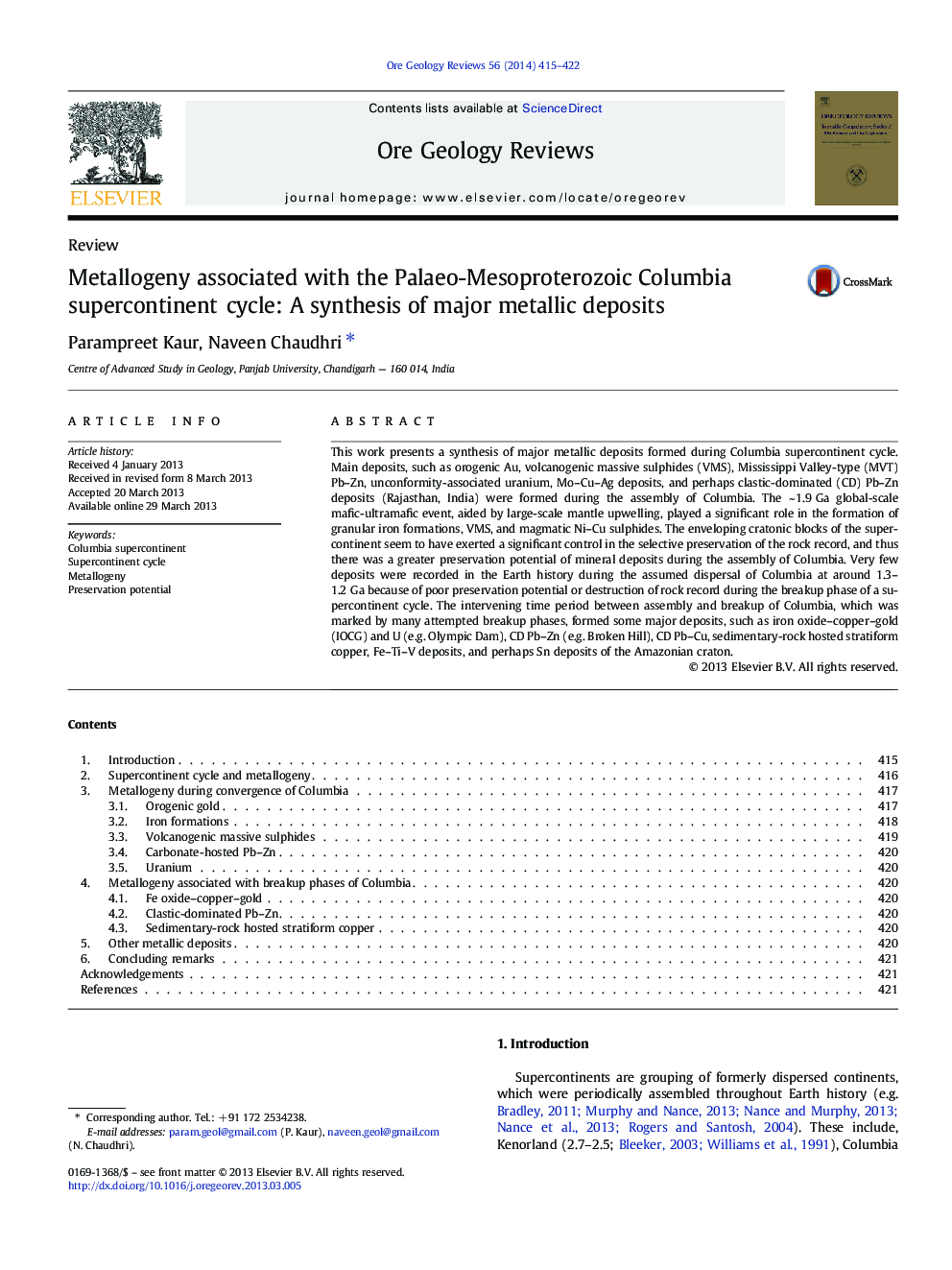| Article ID | Journal | Published Year | Pages | File Type |
|---|---|---|---|---|
| 4697443 | Ore Geology Reviews | 2014 | 8 Pages |
•A synthesis of metallogeny during Columbia supercontinent cycle•Greater preservation potential of mineral deposits during assembly of Columbia•Only a few metallic deposits were preserved during dispersal of Columbia.
This work presents a synthesis of major metallic deposits formed during Columbia supercontinent cycle. Main deposits, such as orogenic Au, volcanogenic massive sulphides (VMS), Mississippi Valley-type (MVT) Pb–Zn, unconformity-associated uranium, Mo–Cu–Ag deposits, and perhaps clastic-dominated (CD) Pb–Zn deposits (Rajasthan, India) were formed during the assembly of Columbia. The ~ 1.9 Ga global-scale mafic-ultramafic event, aided by large-scale mantle upwelling, played a significant role in the formation of granular iron formations, VMS, and magmatic Ni–Cu sulphides. The enveloping cratonic blocks of the supercontinent seem to have exerted a significant control in the selective preservation of the rock record, and thus there was a greater preservation potential of mineral deposits during the assembly of Columbia. Very few deposits were recorded in the Earth history during the assumed dispersal of Columbia at around 1.3–1.2 Ga because of poor preservation potential or destruction of rock record during the breakup phase of a supercontinent cycle. The intervening time period between assembly and breakup of Columbia, which was marked by many attempted breakup phases, formed some major deposits, such as iron oxide–copper–gold (IOCG) and U (e.g. Olympic Dam), CD Pb–Zn (e.g. Broken Hill), CD Pb–Cu, sedimentary-rock hosted stratiform copper, Fe–Ti–V deposits, and perhaps Sn deposits of the Amazonian craton.
Graphical abstractFigure optionsDownload full-size imageDownload as PowerPoint slide
